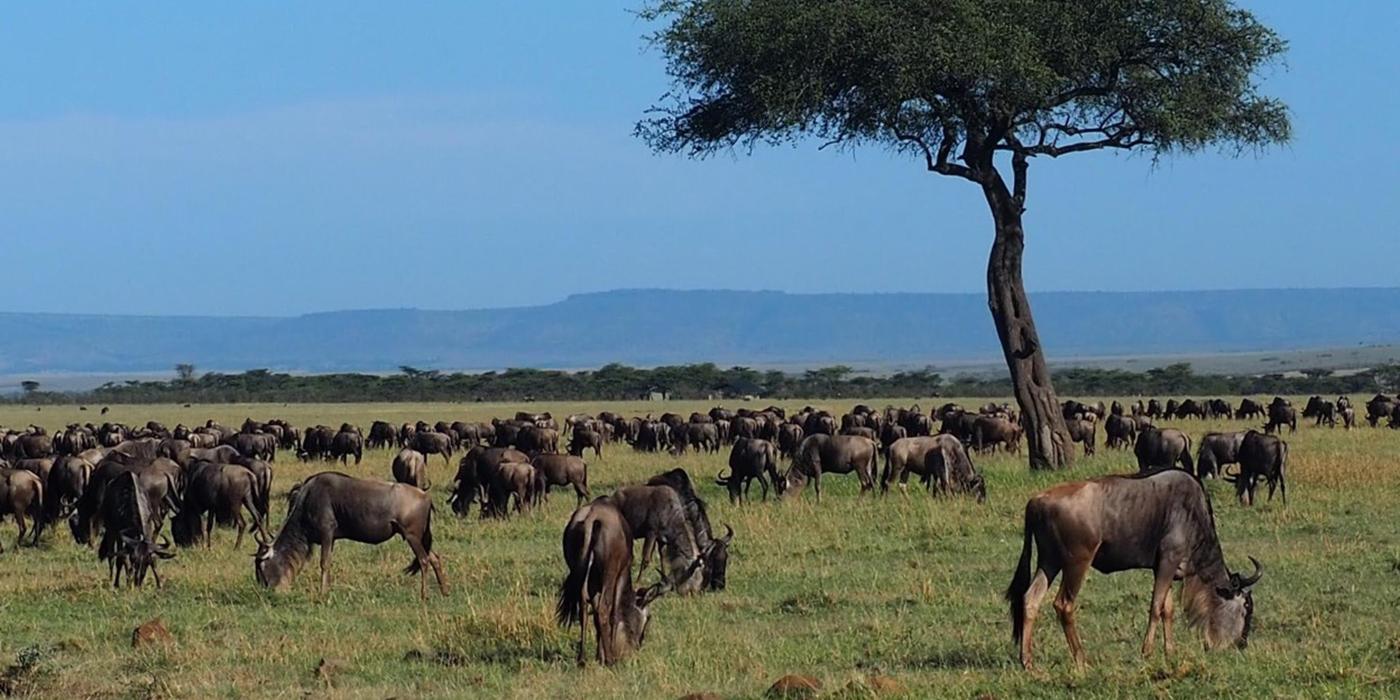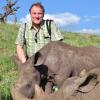Wildebeest Conservation
Conservation Ecology Center scientists are using GPS collars to study the movements of white-bearded wildebeest across East Africa's grassland savannas. Using the data collected from GPS collars, as well as historic movement data, they aim to understand how wildebeest are impacted by changes to the landscape. Their findings will help prioritize areas for conservation to keep grassland habitats connected, so wildebeest can safely travel to find resources year-round.
White-bearded wildebeest impact nearly every aspect of savannah grassland ecology, including biodiversity, food webs, wildfire intensity, grassland tree growth, and local economies. Through grazing, wildebeest reduce the amount of vegetation that can act as fuel in a wildfire and make it possible for new, diverse plants to grow. This improves habitat quality for other species, including birds and butterflies, making wildebeest a keystone species.
Movement is a fundamental aspect of animal ecology. It allows animals to find resources and mates, avoid predators, and leave areas that no longer meet their needs. Wildebeest are constantly on the move throughout their natural range. Over the past 50 years, however, many grasslands have become fragmented due to human-made changes to the landscape. This reduces the amount of habitat available to wildebeest, restricts their range and impacts their survival. Recent estimates indicate that Kenya's wildebeest populations may have declined as much as 93% since the 1970s.
Since 2016, the Conservation Ecology Center team has collaborated with One Mara Research Hub to evaluate changes to Kenya's Maasai Mara ecosystem, including the construction of fences across the region. Scientists are monitoring how wildebeest respond to these land-use changes by fitting some wildebeest with GPS tracking collars and examining historic (2010-2013) datasets on wildebeest movement.
By analyzing this data, researchers can estimate the amount of space wildebeest require and identify key areas of habitat connectivity. They will work with local communities and government officials to share this scientific data to support the conservation of wildebeest, and their iconic ecosystem, into the future.
The wildebeest conservation project is a collaboration with the Smithsonian's Working Land and Seascapes Initiative and the One Mara Research Hub. This work is generously supported by the Ohrstrom Foundation.













